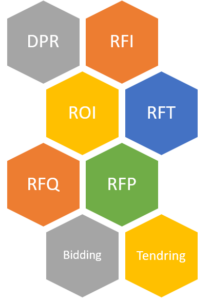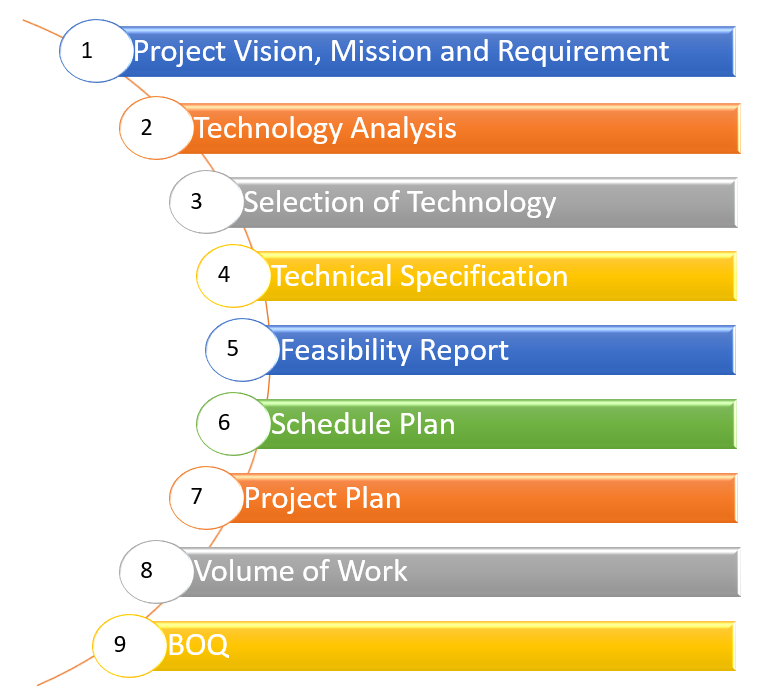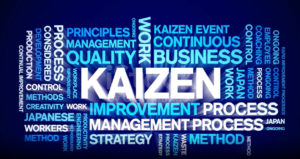We can say that the task contains resources, stakeholders, and coordination called project management which is a goal that gets provided to the project manager with some specific budget and frame. To make the procedure to complete the task, A project manager depends on many documents and processes.
Through this blog, we will explore the detailed project report format with the detailed project report content required for a project manager by including DPR, RFQ, RFP, and RFT. Understanding these elements will help you to successfully handle the project.

DPR ( Detailed Project Report )
The foundation of the project’s planning and execution is DPR project management, which is a document filled with all information and details that are required during execution.
The project is prepared in its initial stage. There are many questions that will be answered in the project such as the project’s scope, objectives, feasibility, and resource requirement.
Key Components of DPR
Project Description – a short summary of the project by including its objectives and expected outcomes.
Feasible analysis – An evaluation of the project’s financial, operational, and technical feasibility.
Scope and objectives – The project’s scope and objective should be clearly defined.
Resource Requirements – All the necessary resources should be mentioned such as personnel, equipment, and funding.

RFP (Request For Proposal)
The term RFP is about where it prepares for solicitation for the suppliers and service provided. The proposal usually gets issues in the case where they need to proceed toward the idea. The RFP is prepared for requirements, expectations, and evaluation criteria.
Project Scope – The project’s scope is about describing the deliverables and milestones.
Evaluation criteria – All the guidelines regarding the proposal should be mentioned such as How the proposal will be assessed and scored.
Timeline – This point is about elaborating the project’s Schedule, deadlines, and milestones.
Terms and conditions – All the legal and contractual points will be explained in the project.
RFI (Request for information)
The document request for information (RFI) is a type of document where all the information regarding the RFP will be mentioned from supplier to solutions. RFI is used for a better understanding of the market and to identify the potential of vendors.
Key components of RFI
Background Information – all the information regarding the organization’s needs and the project’s context.
Information request – All the answers will be mentioned regarding questions and requests for the Vendor’s capabilities, experience, and offerings.
Response format – terms and conditions for how vendors should respond to the RFI, including Submission deadlines.
-

detailed project report examples
RFQ (Request for quotation)
An RFQ ( request for quotation ) is a type of project where the obtained price will be quoted for particular goods and services. It is the same as an RFP which focuses on broader project requirements but the RFQ is mainly focused on the pricing.
Key components for RFQ
Item requirements – The list of goods and services with their pricing.
Pricing details – Conditions for vendors submitting pricing information that includes units of price and total assets.
Terms and conditions – Legal and contractual terms relevant to the quotation process.
RFO (Request for offer )
The need for RFO (Request for offer) to the organization comes when they are opening various solutions or approaches by inviting the vendor to offer their innovative and creative ideas. The use of RFO comes when there is a requirement for creativity and flexibility ideas.
Key Component for RFO
Project overview – A brief summary of project objectives and challenges.
Flexibility requirements – all the guidelines that how the vendor needs to handle the project by allowing creative and unique ideas.
Evaluation criteria – the criteria used to examine the offers that include cost, innovation, and overall project feasibility.
RFQ :- Request for Quotation
When customers have all specifications, technical details, and Solutions but only looking for the best price or Quotation then RFQ can work. In which customers only looking for the best pricing. The customer needs to share all project details, requirements, and complete solutions. Based on that solution supplier can analyze the project requirement and based on that they can assess the pricing.
The quotation should be catered to each and every component (Hardware, cable, connector, module, power, service charges, etc)because if any hardware is not considered it can be an FOC for the supplier or Customer.
Conclusion
Wrapping up the blog with my final thought where I have talked about project management with its factors such as DPR, RFP, RFI, RFQ, and RFO. Every point has been explained in the blog with the components that should be explained in it. All these components will help to make the project more effective and qualitative. When you are a student of a project manager this is going to help you while providing you with plenty of knowledge regarding it to make your project presentable.
FAQ for project management
Q: What does DPR mean?
A: DPR means Detailed Project Report.
Q: Explain Detailed Project Report (DPR).
A: It is a complete detailed project report and a blueprint for its Planning, Approval, Costing, Requirement, and Implementation plan for the project.
Q: What is the purpose of a DPR?
A: The purpose of a DPR is to present a detailed plan for the execution of a project.
Q: DPR prepared by which team?
A: DPR is typically prepared by a project team or a specialized consultant engaged in the project.
Q: What is RFP?
A: RFP stands for Request for Proposal.


